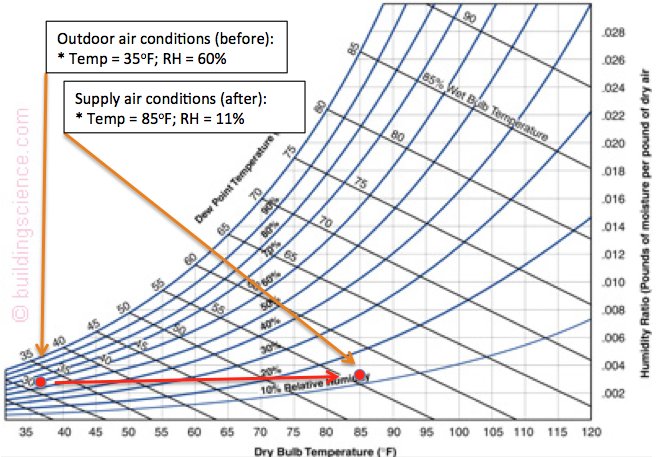Is your skin feeling dryer than usual? Notice that you need to water the houseplants more frequently? It’s hard to believe there would ever be a need for humidifying given how wet the summer was, but let’s face it, it’s dry! And as the temperature outside gets colder, it’s going to get even dryer indoors. So, take some precautions in protecting wooden instruments, antique furniture, hardwood floors and your air-ways from drying out and cracking!
When it comes to humidity, there’s an optimal range for indoor conditions. If the moisture is too high, we end up with mold, mildew, and a host of other problems, as we discussed in last month’s blog. If moisture levels are too low, our skin and air-ways tend to dry out, causing irritation and discomfort; static electricity builds up easily and can hinder the operation of electronics; and valuable wooden items can crack and warp. In terms of health, dry air can foster viruses and respiratory infections. The optimal range for a comfortable home is around 30-40% in the winter. If humidity creeps up too high, condensation could form on cold windows, causing damage in the long run.
Winter tends to feel dryer than summer because cold air cannot hold as much moisture as warm air. When you bring cold outdoor air into a furnace, you add only sensible heat to the airstream (no added latent heat), so the total water content in the air stays the same. Now since the air is warmer, the amount of water it can hold increases (this is what I like to call the magic of physics), so the relative humidity decreases. Relative humidity is the ratio of how much water a given amount of air actually holds compared to how much it can hold at a particular temperature. The psychrometric chart below shows the process of sensibly heating the outdoor air in the furnace and the before and after properties of the air stream. You can see how the total moisture content (humidity ratio) stays the same, but the relative humidity decreases dramatically.

To maintain comfort levels and preserve valuable belongings, consider using a humidifier to add moisture to the air. There are many portable varieties available at major home improvement stores or online. If you’re considering adding a whole-house humidifier, check out this system by Lennox.
It is important to monitor indoor humidity levels all year round to ensure conditions remain in the safe and comfortable range. E3 INNOVATE offers whole-home indoor air quality monitoring to help you understand the fluctuations in seasonal conditions in your home. With this information, we can help you create a personalized improvement plan that addresses the specific needs of your home.
It is also important to keep the reservoir of the humidifier clean and free of mold. Humidifier filters are prone to mineral deposit build up, especially if you use hard water. The deposits can cause the unit to run less efficiently and can decrease its lifespan. Can clean the filter using a 50/50 solution of distilled vinegar and water. Soak the filter for about an hour, then rinse with clean water and allow the filter to dry completely before reassembling the humidifier. It is recommended that the filter be cleaned at lest twice a month to keep the humidifier functioning optimally. When the unit is not in use, drain the reservoir and make sure the unit is completely dry before storing to prevent mold growth.









